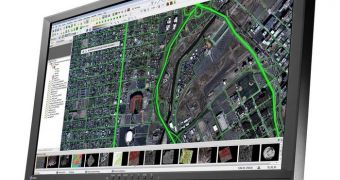You wouldn't think that display makers would actually come up with a monitor made specifically for a type of image, but here you go: Eizo's DuraVision FDF2405W, in the flesh. Or rather plastic.
Granted, it's not just any type of image we're talking about. The DuraVision FDF2405W is actually intended for satellite images, which need a high sharpness and low lag.
That matter is easily solved by the 240 Hz blur reduction function, which gives the newcomer the ability to convert 120 Hz input signals into 240 Hz.
120 Hz is already twice as good as the standard refresh rate of Full HD monitors (1920 x 1080 pixels), which is 60 Hz.
All things considered, the newcomer is similar to those displays made for CAD and image/video editing, only with satellite images as the focus instead.
That the 240 Hz blur reduction function cuts down on eye fatigue incurred by scrolling or zooming an image is a nice side-benefit.
We'd be lying if we said that was the only unusual asset of Eizo's new invention though.
The DuraVision FDF2405W also boasts EIZO's patented drift correction circuit, which stabilizes the screen brightness level within minutes after startup, or from returning from power saving mode.
Then there's the 3D LUT (used to adjust colors individually on an RGB cubic table), and the Digital Uniformity Equalizer (DUE) technology (boosts picture quality by offsetting fluctuations in brightness and chromaticity).
Furthermore, Eizo's monitor supports EPD (Equal Probability of Detection) gamma. Defined by the United States National Geospatial Intelligence Agency, it enables the monitor to more clearly display subtle variations in tones in undefined areas of satellite images and aerial photos.
Other specs include 176-degree viewing angles, a contrast ratio of 5000:1, brightness of 350 cd/m2, non-glare panel, and a stand with height, tilt and swivel adjustment, including portrait mode.

 14 DAY TRIAL //
14 DAY TRIAL //